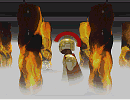Ex Scientia Tridens [Latin] - From Knowledge, Sea Power
Scientology is used to increase spiritual freedom, intelligence, ability and to produce immortality. - L. Ron Hubbard
Introduction to Scientology
Scientology is a set of beliefs and practices created by American author L. Ron Hubbard in the early 1950s, often described as a religion. It teaches that humans are immortal spiritual beings, known as thetans, who have lived through multiple lifetimes and are burdened by traumatic experiences called engrams. Through a process called auditing, practitioners aim to rid themselves of these engrams to achieve spiritual clarity and freedom. While recognized as a religion in some countries like the U.S. and Australia, it faces controversy and legal challenges in others, such as Germany and France, where it’s seen as a cult or business.
History and Founding
Scientology’s roots lie in Dianetics, a system Hubbard developed and published in his 1950 book "Dianetics: The Modern Science of Mental Health." After initial success, the Dianetics organization faced bankruptcy, and Hubbard lost rights to his book. In 1953, he rebranded it as Scientology, incorporating the Church of Scientology to gain tax-exempt status and avoid legal issues related to practicing medicine without a license. The organization expanded globally, but faced controversies like Operation Snow White in the 1970s, where Scientologists infiltrated government agencies, leading to convictions. Hubbard led until his death in 1986, with David Miscavige succeeding him as leader.
Beliefs and Practices
Scientology’s core belief is in the thetan, an immortal spiritual being that has existed for trillions of years, living through countless lifetimes. The human mind has an analytical part (rational) and a reactive part storing engrams—painful memories hindering progress. Auditing, using an E-meter to detect engrams, aims to eliminate these, leading to "Clear" status, free from the reactive mind. Advanced levels, Operating Thetan (OT), involve further spiritual development, including the confidential Xenu story, where a galactic ruler allegedly brought beings to Earth millions of years ago. Scientology acknowledges a supreme being but focuses on individual growth, not worship.
Auditing, using an E-meter, is central, costing significant amounts (e.g., a 25-hour block in 1964 equated to three months’ middle-class pay, $4,000 for 12.5 hours in 2007, equivalent to $6,070 in 2024). OT levels, post-Clear, involve extraterrestrial teachings, with texts available on WikiLeaks. Other practices include Study Tech for education, ethics and justice systems to regulate behavior, and the Rehabilitation Project Force (RPF) for Sea Org discipline, criticized for human rights violations. Social outreach includes Narconon (1966) for drug rehab, Criminon for criminal reform, and the Volunteer Minister Program for disaster relief, often criticized as recruitment fronts.
Practices include auditing, costing hundreds of thousands for higher levels (e.g., up to $500,000 for OT VIII), training courses, and social programs like Narconon for drug rehab. It also opposes psychiatry, running the Citizens Commission on Human Rights and a museum, "Psychiatry: An Industry of Death."
Organizational Structure and Global Presence
The Church of Scientology is centralized, with headquarters in Clearwater, Florida, and Los Angeles, California. The Sea Organization (Sea Org), an elite group, signs billion-year contracts, symbolizing lifelong commitment. It operates hundreds of churches and missions worldwide, known for aggressive legal tactics against critics and extensive real estate holdings.
The Church is headquartered at Gold Base, California, and Flag Land Base, Florida, operating hierarchically with statistics-based management. The Sea Org, recruiting from members’ children, signs billion-year contracts, with the RPF involving 5 hours auditing, 8 hours labor, 7 hours sleep daily. The Office of Special Affairs, formerly Guardian’s Office, conducts intelligence operations, including "dead agent" tactics. Financials show $1.7 billion in assets in 2012, with annual revenues at $200 million, and mission establishment costing $35,000 for a Starter Pack in 2001 (equivalent to $62,200 in 2024). It claims over 700 centers in 65 countries by 2011, facing schisms with independent groups like Free Zone Scientology.
Legal Status and Controversies
Scientology is recognized as a tax-exempt religion in the U.S. (since 1993) and countries like Australia and Italy. However, in Germany, it’s monitored as an anti-constitutional cult, and in France, it faced fraud convictions. Controversies include Operation Snow White, allegations of abuse (e.g., forced abortions, human trafficking), and the death of Lisa McPherson in 1995 under church care, with charges later dropped. Critics view it as a profit-driven enterprise, not a religion.
Scientology’s legal status varies: recognized as a religion in the U.S. (1993 IRS agreement), Australia (1983 High Court ruling), and Italy, but classified as an anti-constitutional cult in Germany and a dangerous cult in France, with fraud convictions in 2009 (upheld 2013). Legal battles include Operation Snow White (1970s), with 11 officials convicted, fined $10,000 each (equivalent to $43,000 in 2024), and sentenced 4-5 years. Allegations include human trafficking (lawsuits 2009, 2019), child labor, and forced abortions, reflecting ongoing debates about its religious versus commercial nature.
Current Membership and Influence
Estimates suggest 25,000 to 50,000 active Scientologists worldwide, mainly in the U.S., though the church claims millions, a figure widely disputed. Notable figures like Tom Cruise and John Travolta maintain its public profile, but it faces ongoing scrutiny and declining membership in some areas.
Membership estimates range from 25,000 (U.S., 2008) to 50,000 worldwide, with the church claiming 8-15 million, widely seen as exaggerated. U.S. figures show 45,000 in 1990, 55,000 in 2001, dropping to 25,000 in 2008. International distribution includes Canada (1,400 in 2021), Australia (under 1,700 in 2016), and Europe, with notable figures like Tom Cruise and John Travolta maintaining visibility. Recent reports suggest declining membership, with promotional claims of growth in 2025 (e.g., Scientology Celebrates 2025) likely biased.









